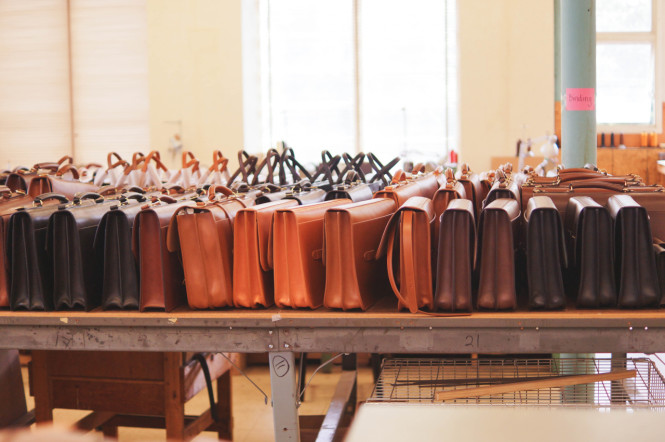A few months ago I was having a chat with my friend Jacob about how the idea of “American made” items is often over-romanticized. I told him that I certainly have a tendency to do this; when I hear the phrase “Made in the USA” I like to picture a wood-floored workshop filled with well-worn tools and with ceiling-high windows that fill the dusty air with afternoon sun. In that room, a skilled craftsman with graying hair and a smudged pair of glasses holds his work up to the light, his calloused fingers wiping away sawdust and checking for imperfections (and, of course, finding none). He then nods contentedly, eyes twinkling, and places the item in a box with my address on it before moving on to his next project.
Of course, this image in my mind isn’t really what most American manufacturing looks like. Unless you’re at Frank Clegg’s workshop, in which case it’s exactly what it looks like.
In short, visiting the Frank Clegg workshop was like walking directly into that image I had in my head. In a room filled with the smell of leather and buckets of brass hardware everywhere, a very small group of men and women make some of the best leather goods on earth. Every surface is covered with an array of leather products in different stages of production; some stand alone as a made-to-order item or a sample, while others lie in a pile of identical products. All of them were designed and built in this Fall River workshop and bear the signs of good materials, good craftsmanship, and good taste.
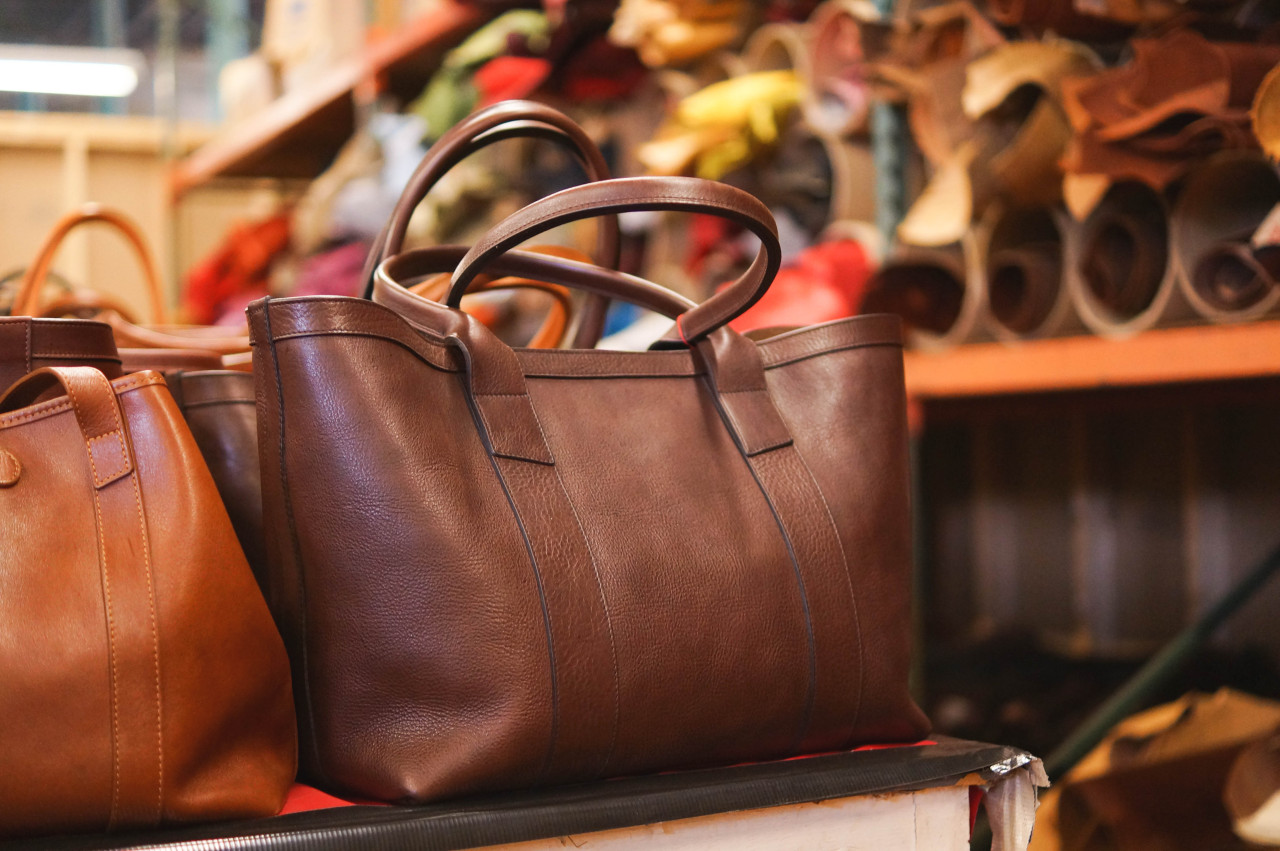
Frank Clegg has been making leather goods since the early seventies, and has built up a considerable following in that time. Many of his core items remain virtually unchanged from their early designs and have remained popular across several generations. He told me the story of a lawyer who purchased one of his briefcases in the mid-seventies; 38 years later, the lawyer is about to retire, with that one briefcase taking him through his entire career. If that’s not an heirloom piece then I don’t know what is.
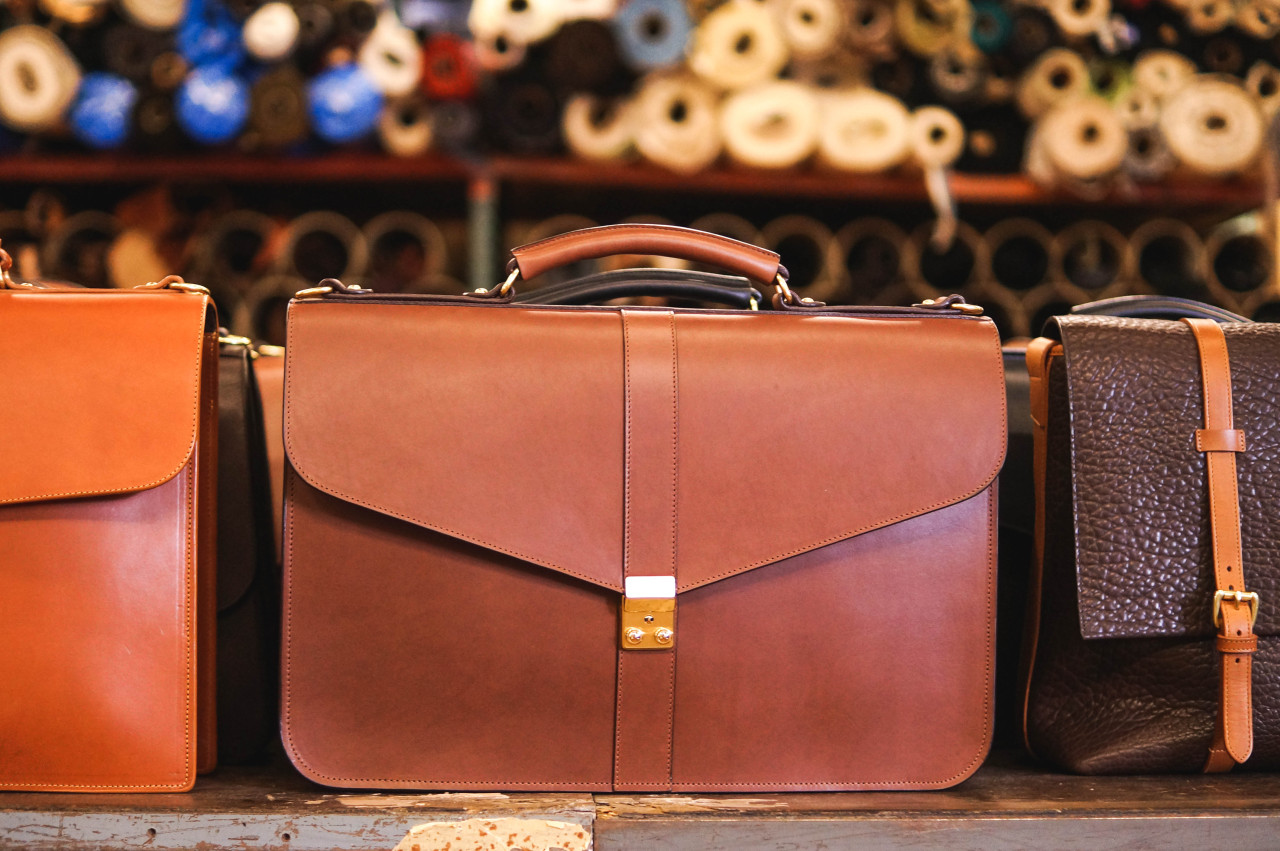
Frank’s products have made it into the hands of many folks over the past 40 years, including one gentleman that happens to be the President of the United States (Frank proudly pointed out that Obama’s bag wasn’t a freebie; it was a full-priced purchase). There have been other celebrities and prominent figures that have been spotted with Frank’s wares, which is not wholly unsurprising given the quality and tastefulness of his products. Of course, his goods aren’t only for lawyers, politicians and celebrities; most of his customers are just people with an appreciation for well-designed and well-made things and are willing to treat these items as an investment.
The primary materials used in Frank Clegg products are belting harness leather and tumbled leather. These leathers are sourced from Italy and France and, although similar, differ slightly in feel and appearance. The belting leather is firmer and the tumbled softer, but both make incredibly beautiful leather goods. Frank is also known to experiment with more unique mediums like shrunken leather, which has a distinctive “wrinkled” texture.
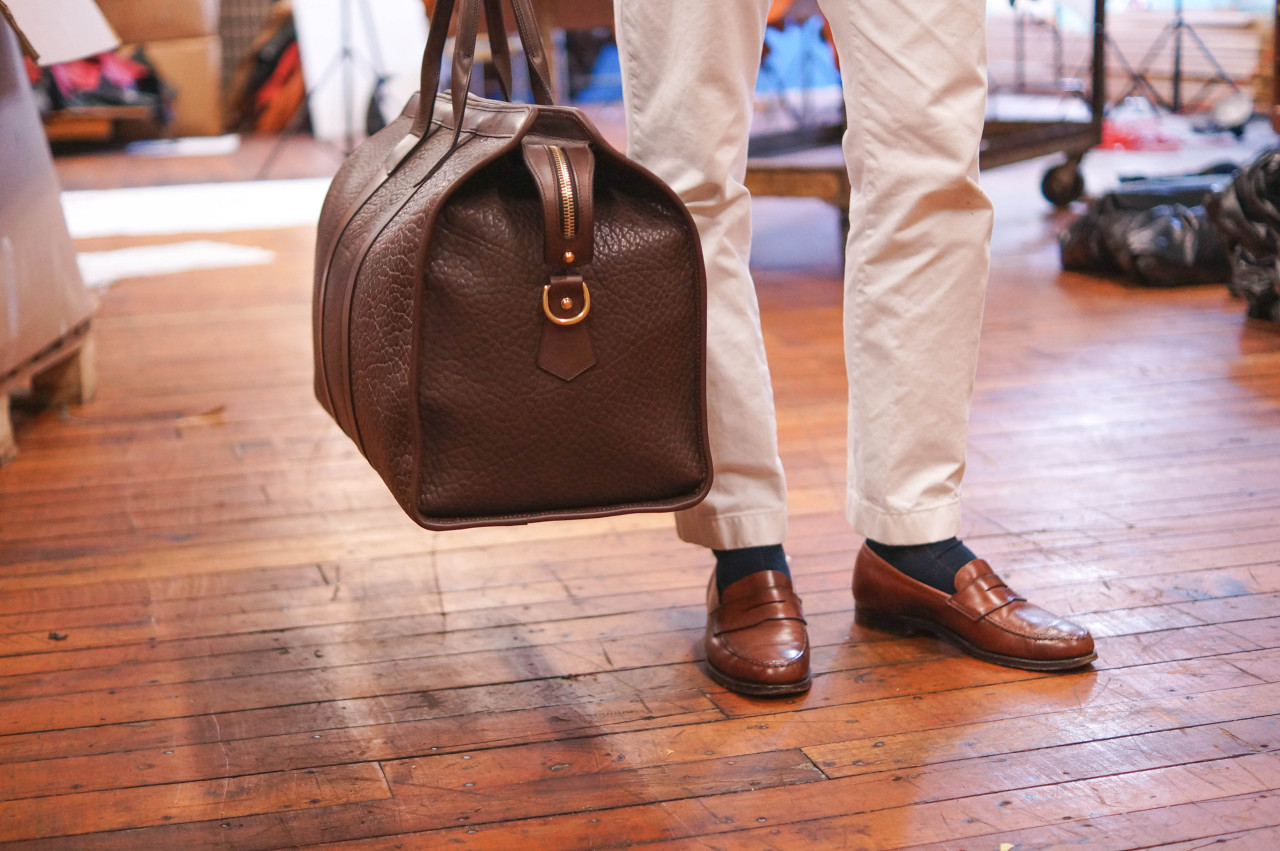
Frank also enjoys designing bags made with some stunning exotic skins – take the bag below, which is made from a single skin of a 21-foot wild alligator. “They don’t get this big in captivity, so we need to get wild skins for this,” he explains. He then hand-stains the hide for a rustic look that complements the wild nature of the animal. If you’re looking to buy “the Beast” it will set you back a cool $17,000, but you’ll probably be the coolest guy at the office with this at your desk.
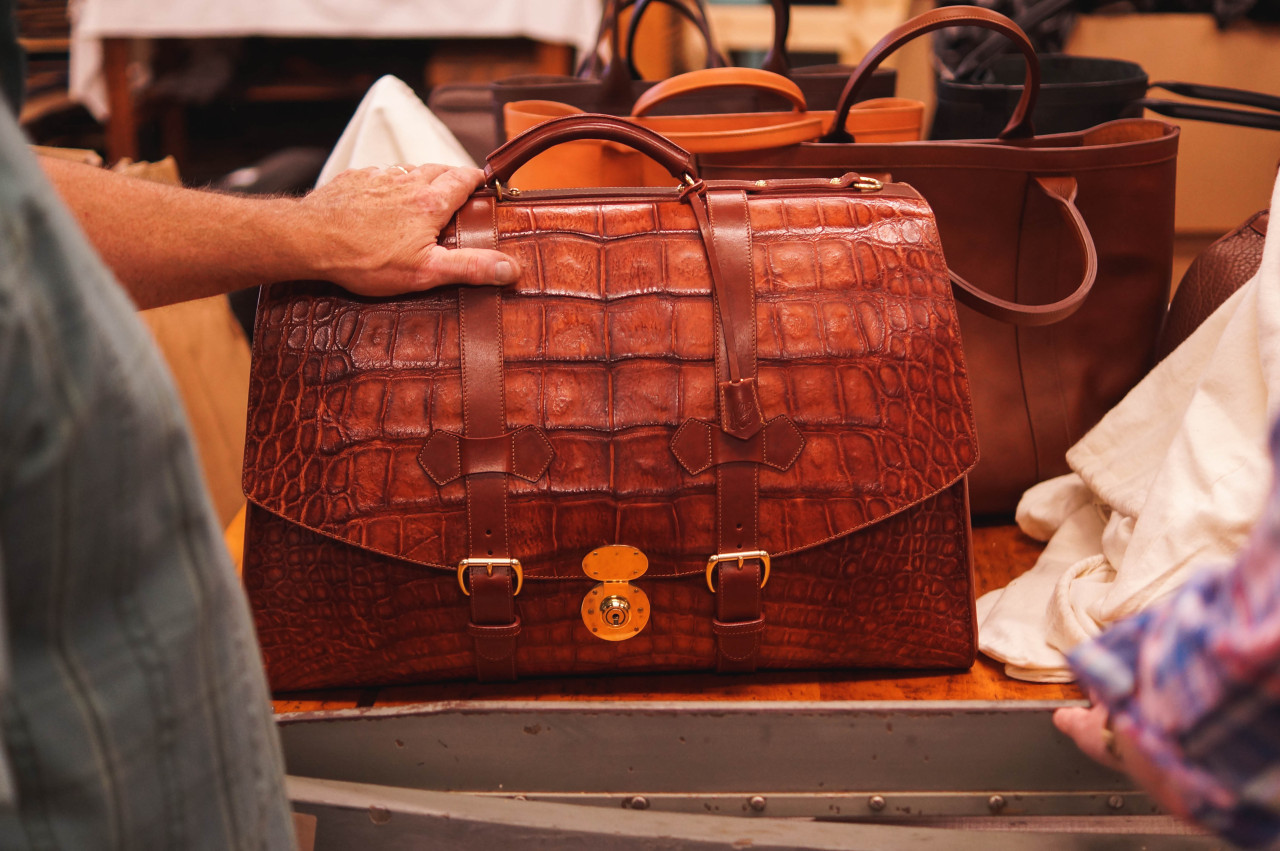
One of the keys to Frank’s success in creating such wonderful pieces over the years (besides great materials and hard work) has been to keep his team small and local. He has never considered moving his small team to another location or outsourcing parts of the process to other areas, he explains.
Advancements and improvements have been made over the decades, including the addition of a large CNC machine used to cut leather hides (instead of metal dies). The effect is the same, but the former is much quicker and allows all that extra space to be filled with more leather goods instead of bulky dies. The CNC machine also reduces waste and allows the team to be more creative and experimental with their designs.
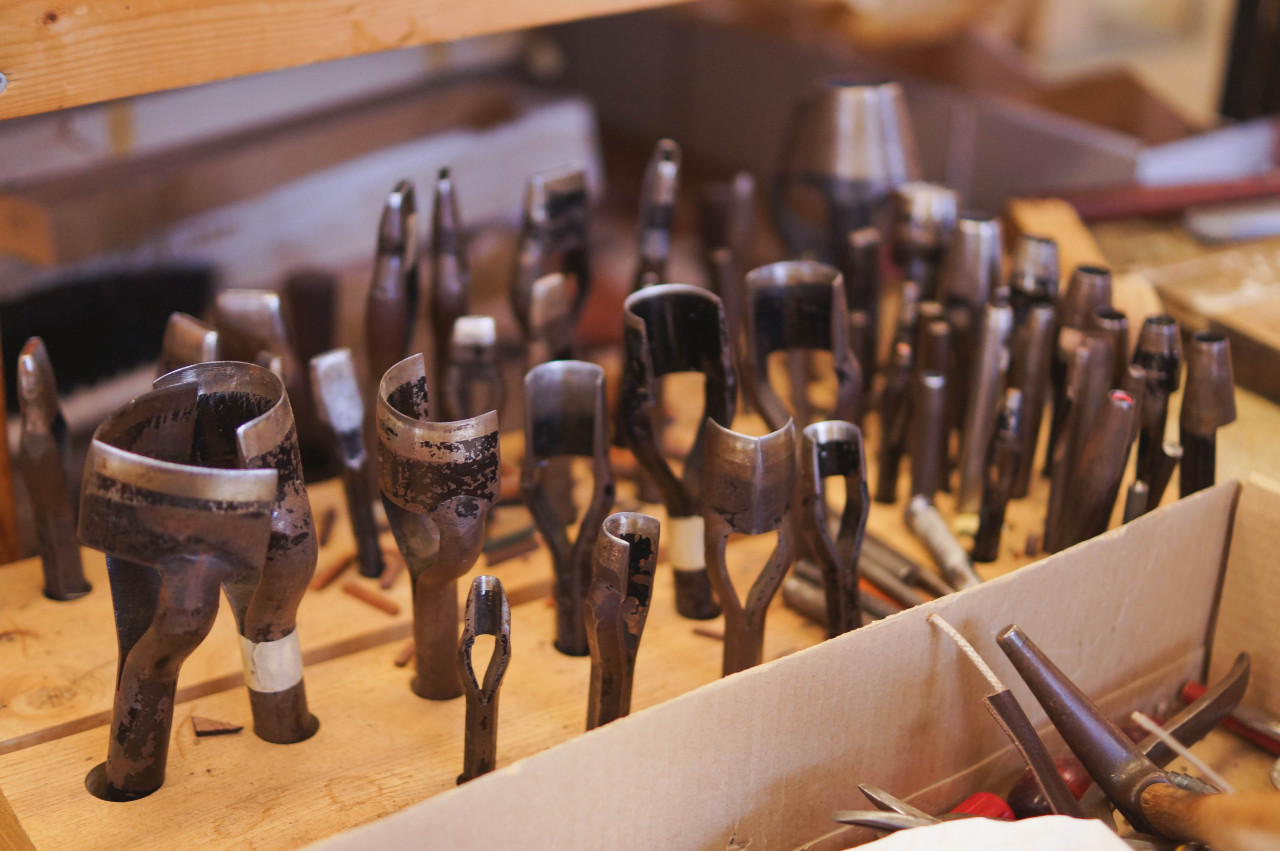
In the past few years, Frank Clegg has collaborated with some exciting brands, his most recent being a partnership with Michael Bastian and with Dan Trepanier of TSBMen before that. I asked Frank if he had any exciting collaborations planned for the coming months; he grinned, and told me that he couldn’t give me details but that his next collab would be “pretty much the top of what I could hope for.” I guess I’ll just have to wait and see.
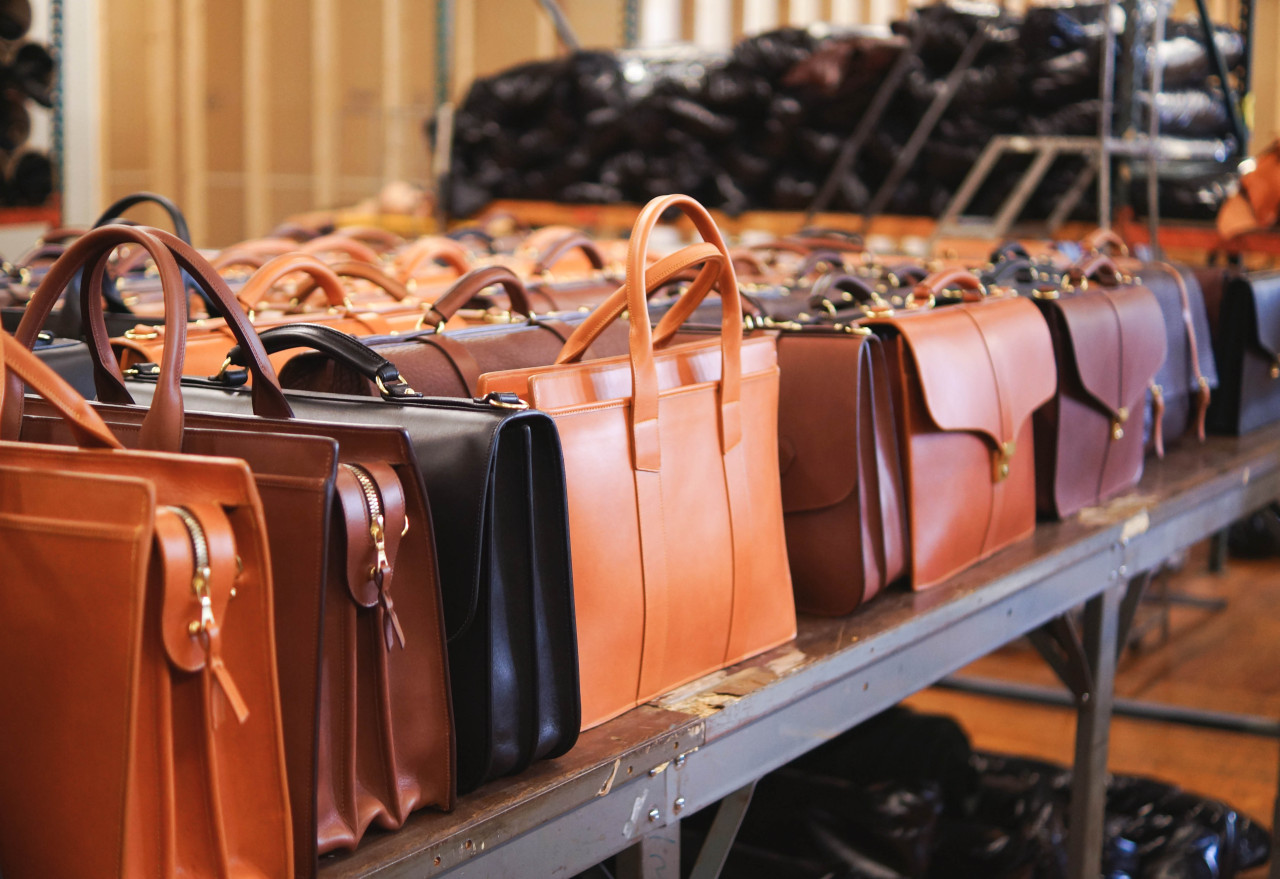
In the meantime, Frank and his two sons are continually adding to their collection and working to improve every aspect of the business. The oldest son, Andrew, works full time in the factory and helps with design of new products (like this new camo bag), and the youngest son Ian takes care of product photography and works on the website and social media.
I have been enamored with Frank’s products ever since I first discovered them, but this factory tour has convinced me that I will eventually have to buy one of his bags. It probably won’t be this year (or even next year) but it will happen. Fortunately for me, I don’t need to be in a rush to buy. Frank’s products have remained virtually unchanged in forty years, and if his team keeps making things the way they always have, I can’t imagine looking for leather goods anywhere else.

Frank explains the construction of his travel duffles
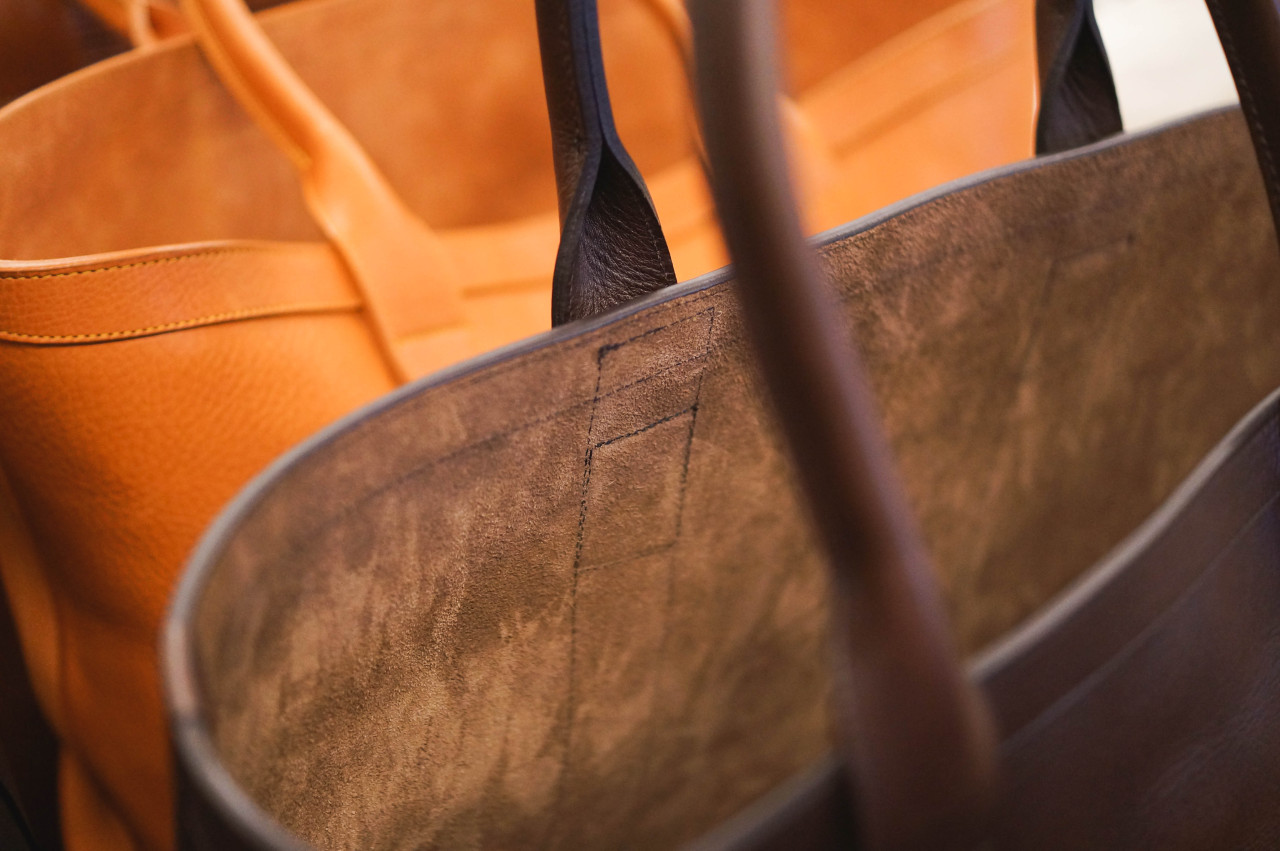
The inside of these bags is as beautiful as the outside.
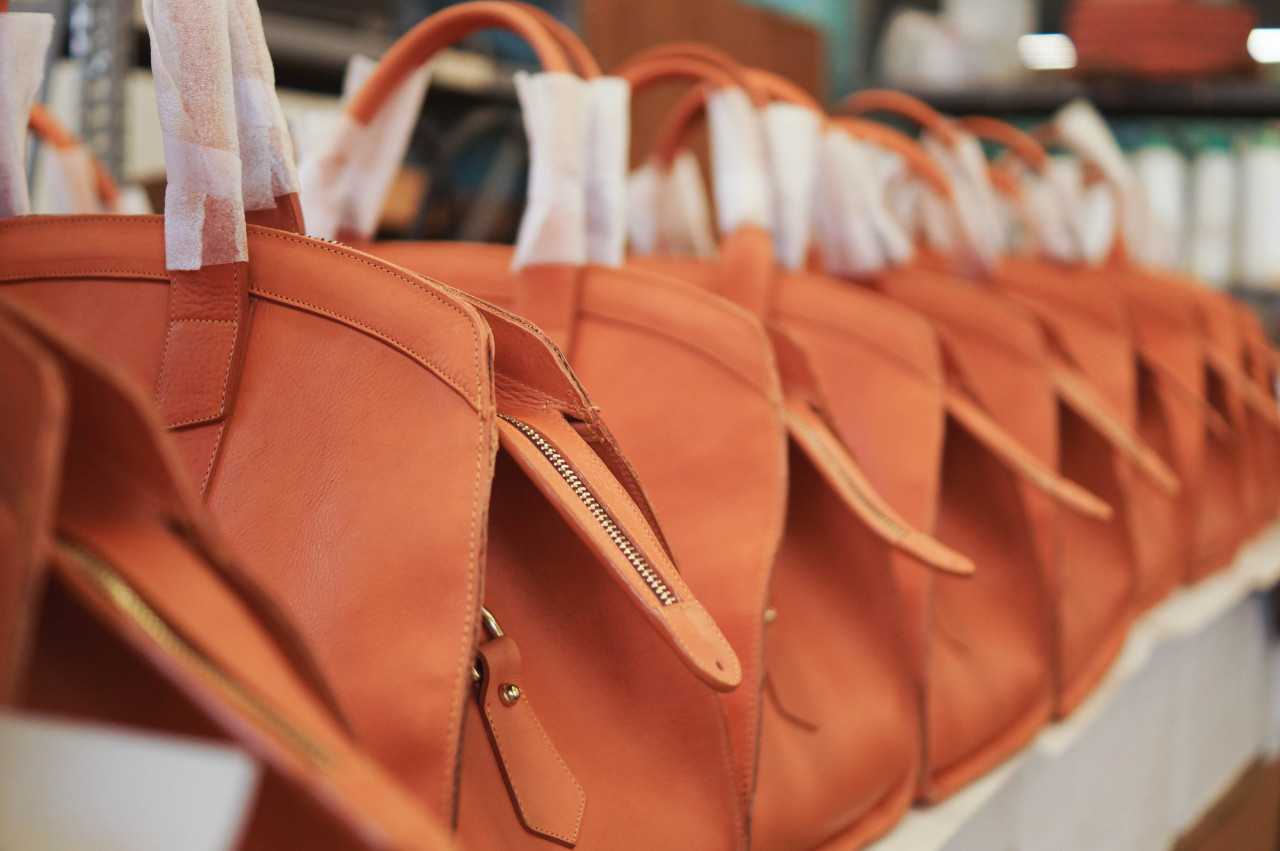
Small duffles in tan ready to be finished.
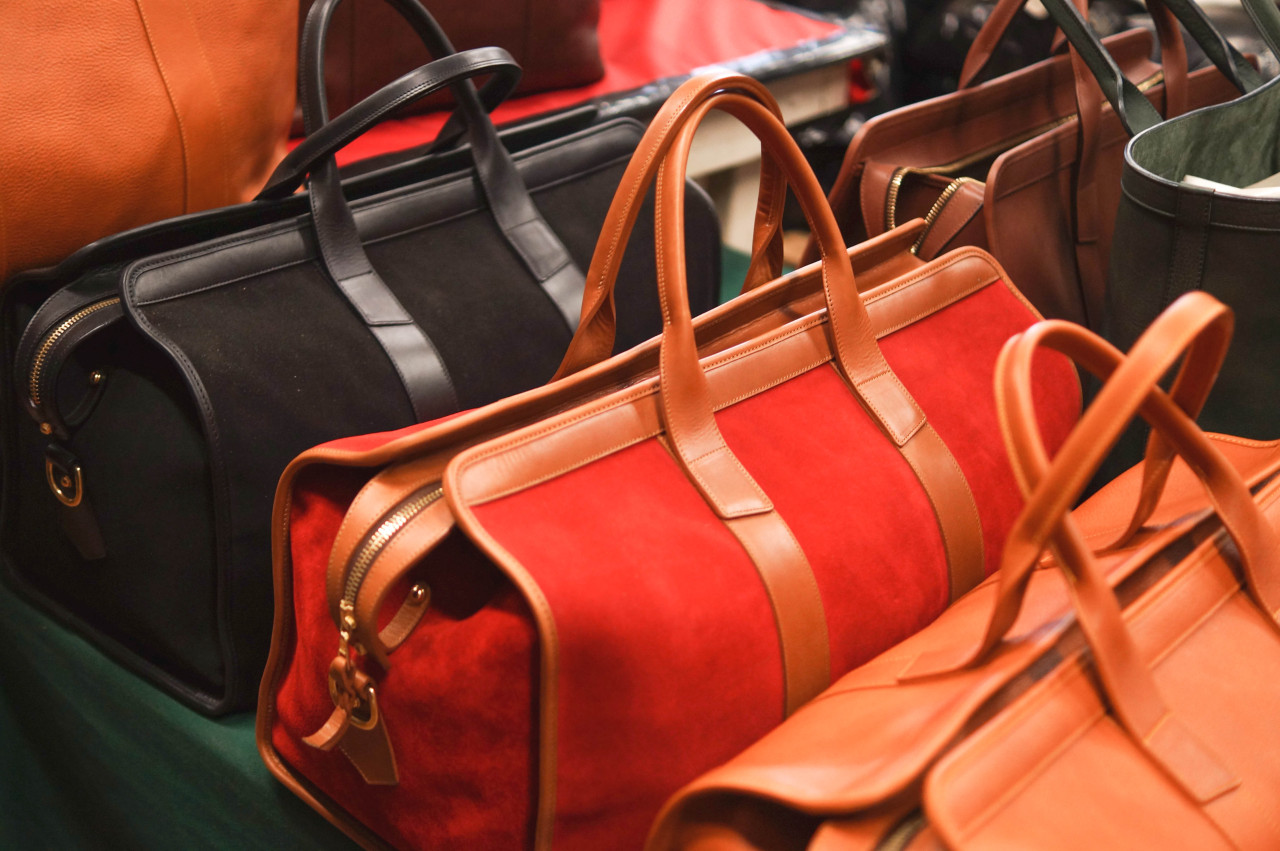
Suede makes an appearance.

Details of a briefcase handle (which can easily be replaced after years of wear)
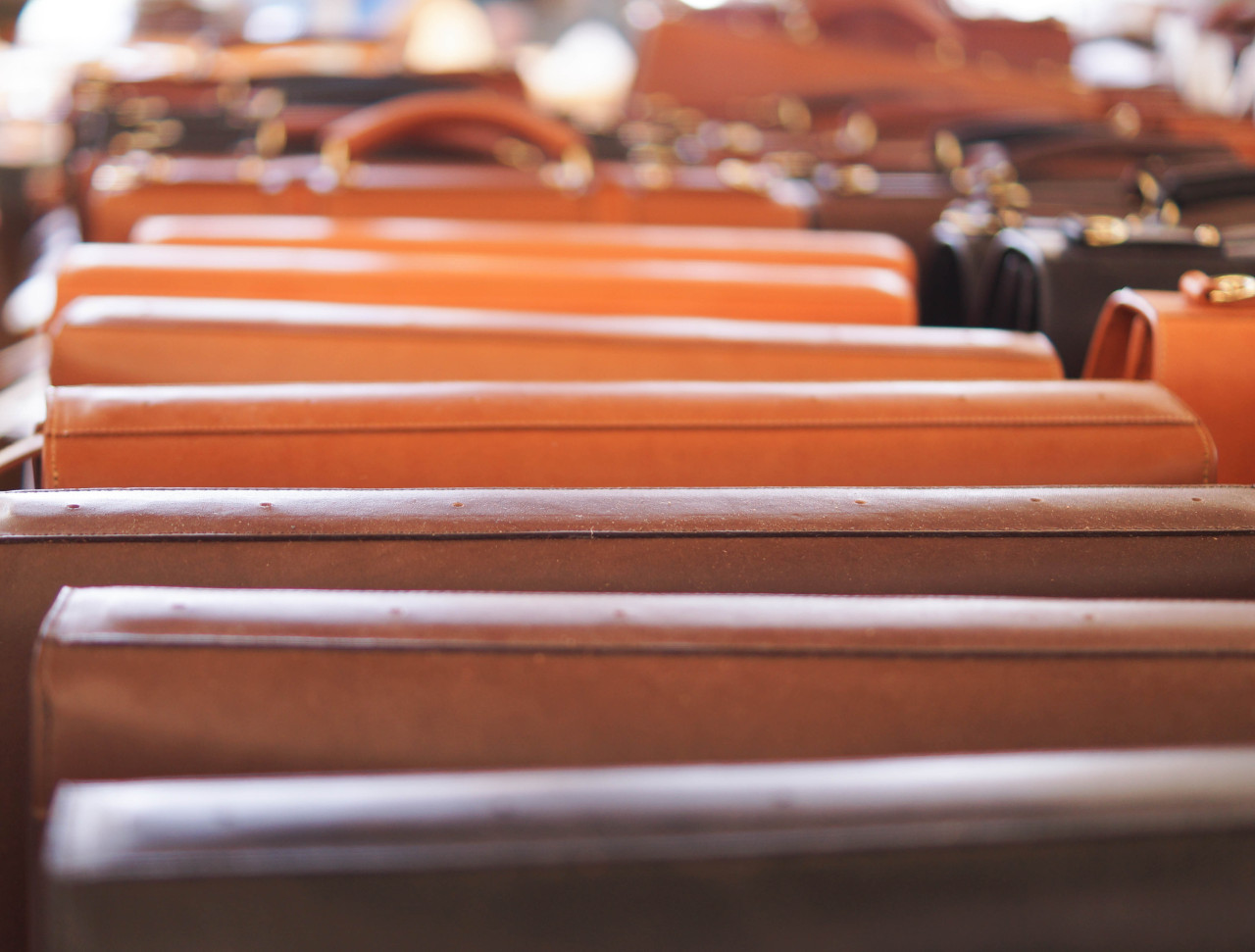
The leather rainbow – black, chocolate, chestnut, cognac, tan.
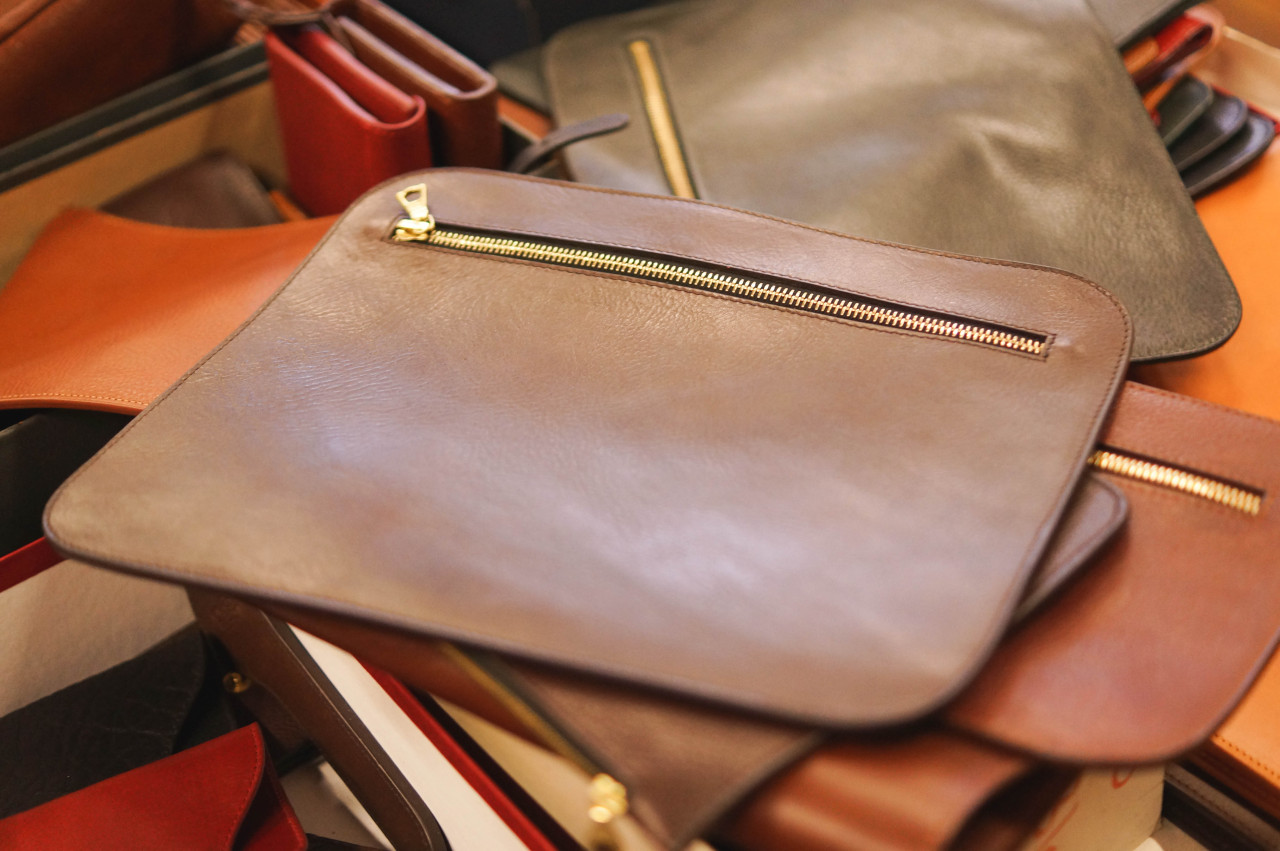
Smaller items like these pencil cases and wallets remain popular as well.
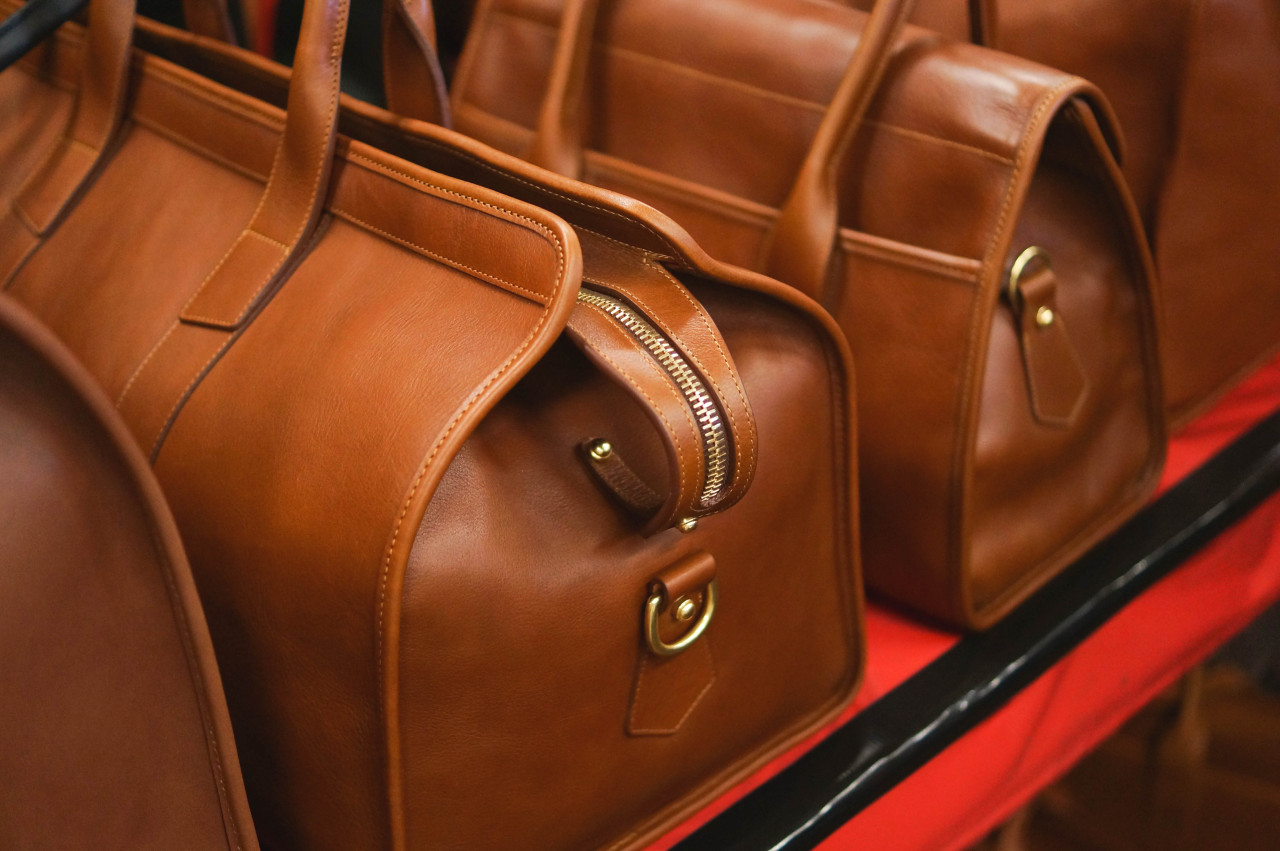
Duffle bag details.
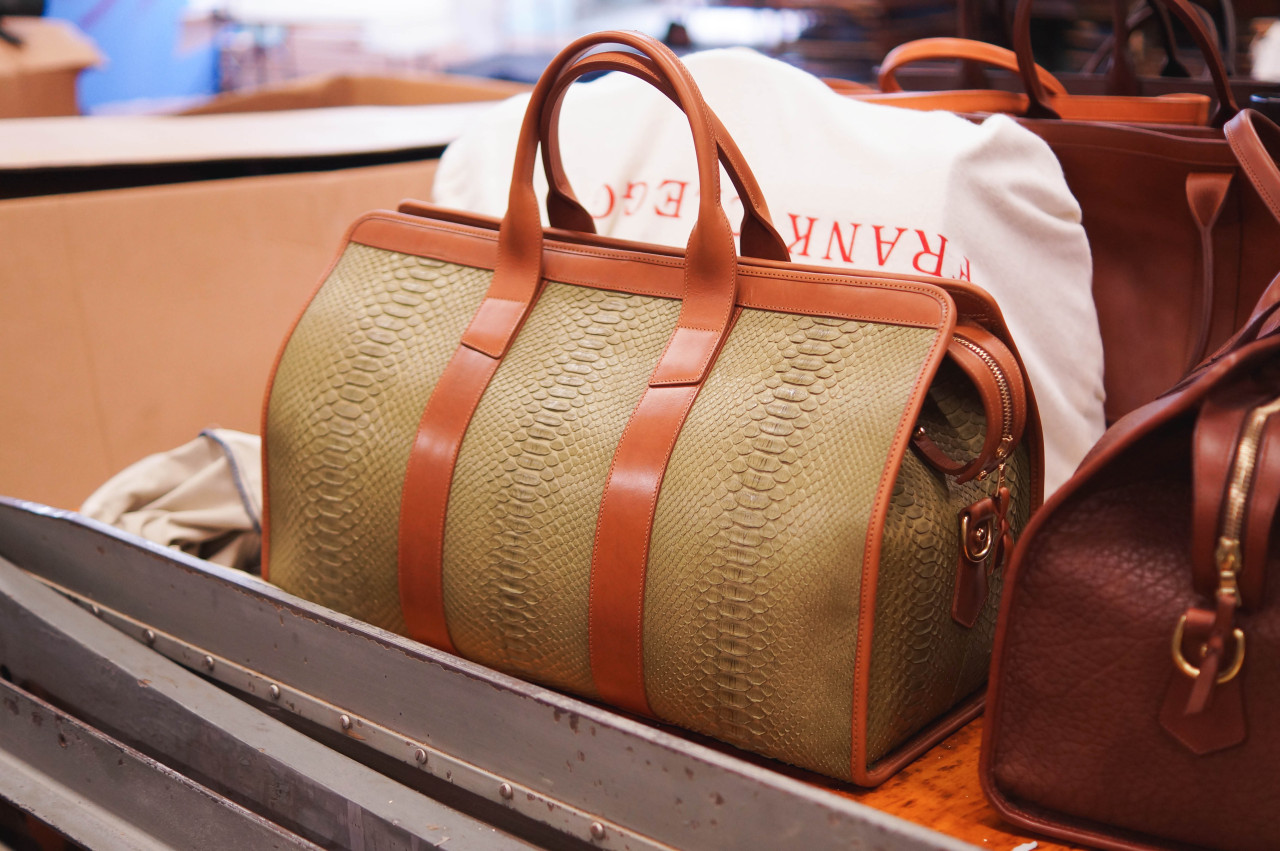
More exotics – three panels of lizard skin.
